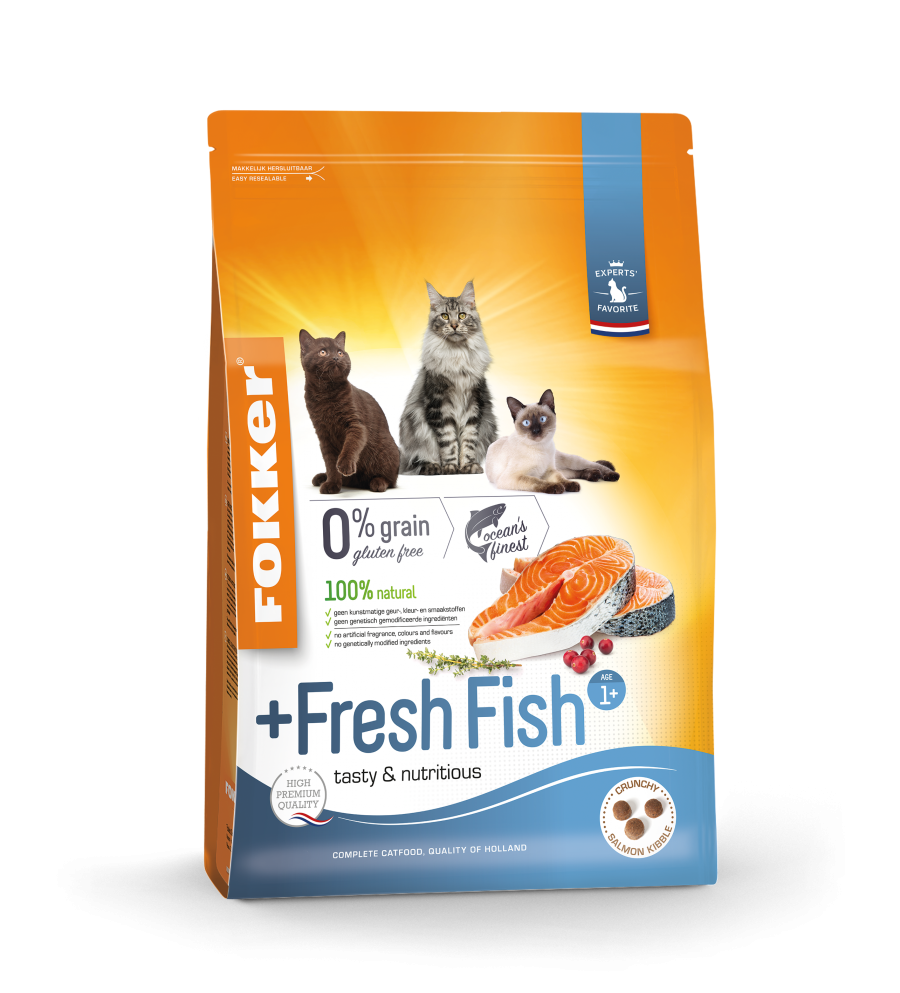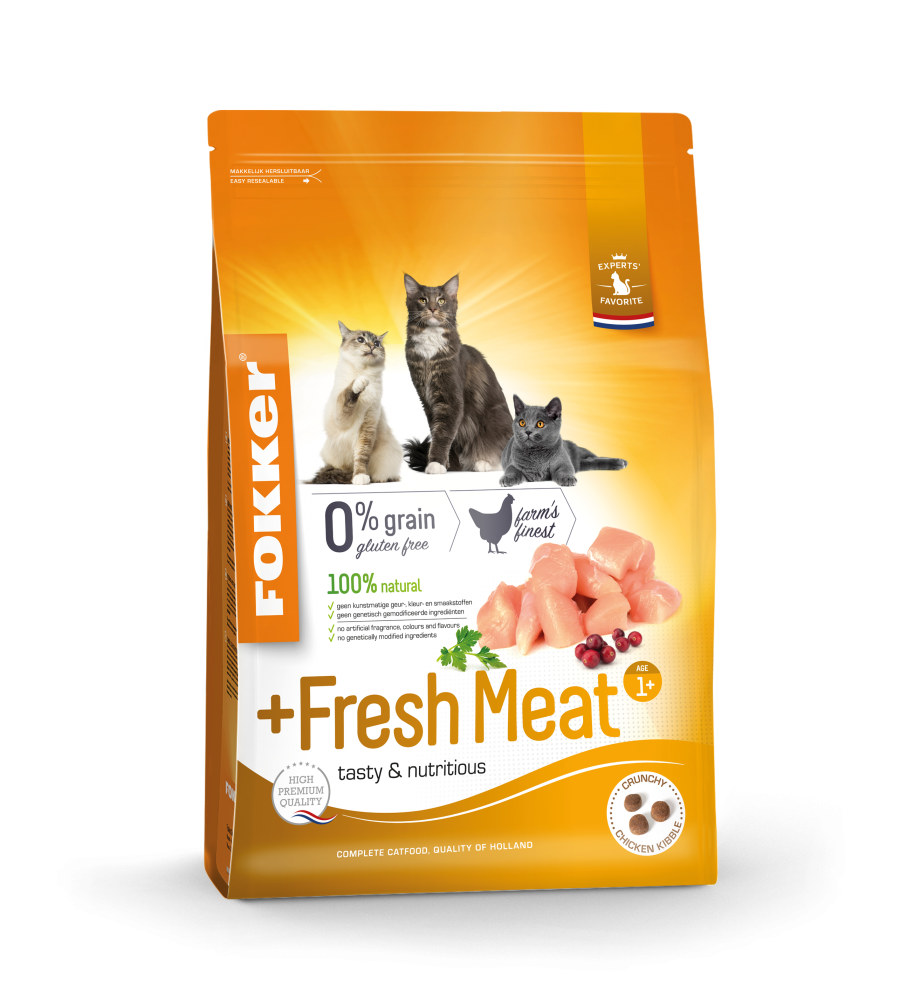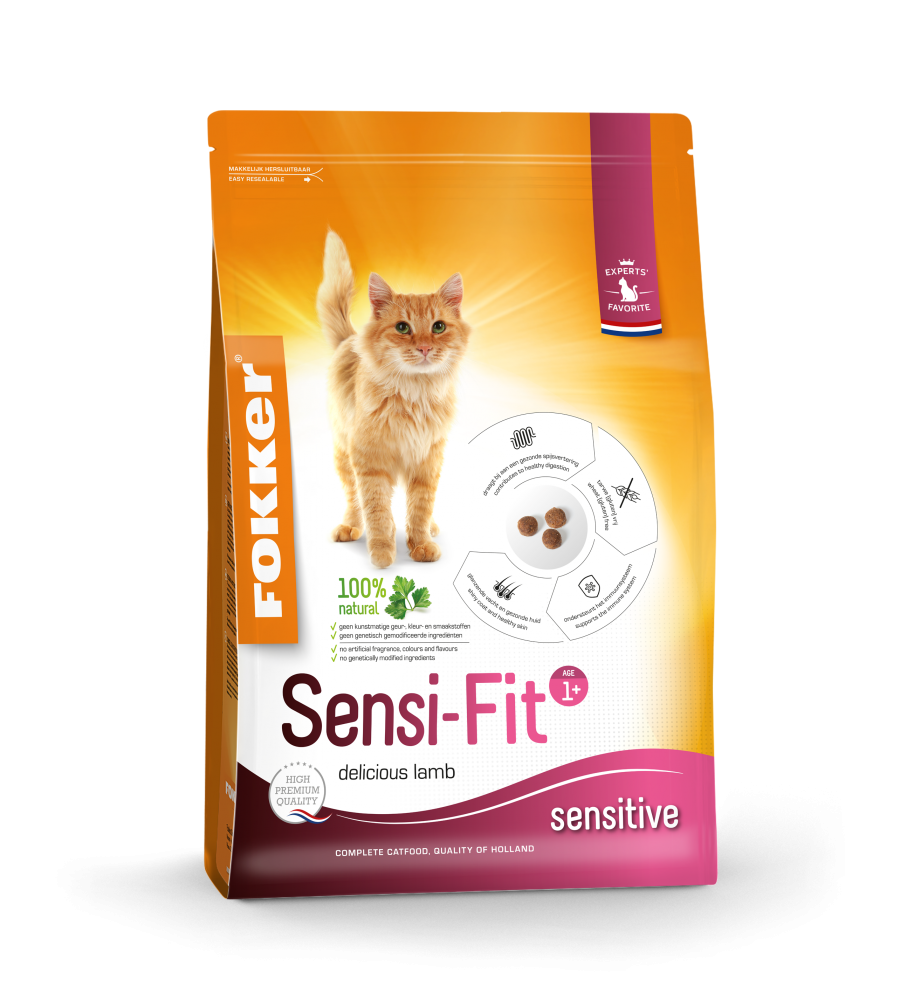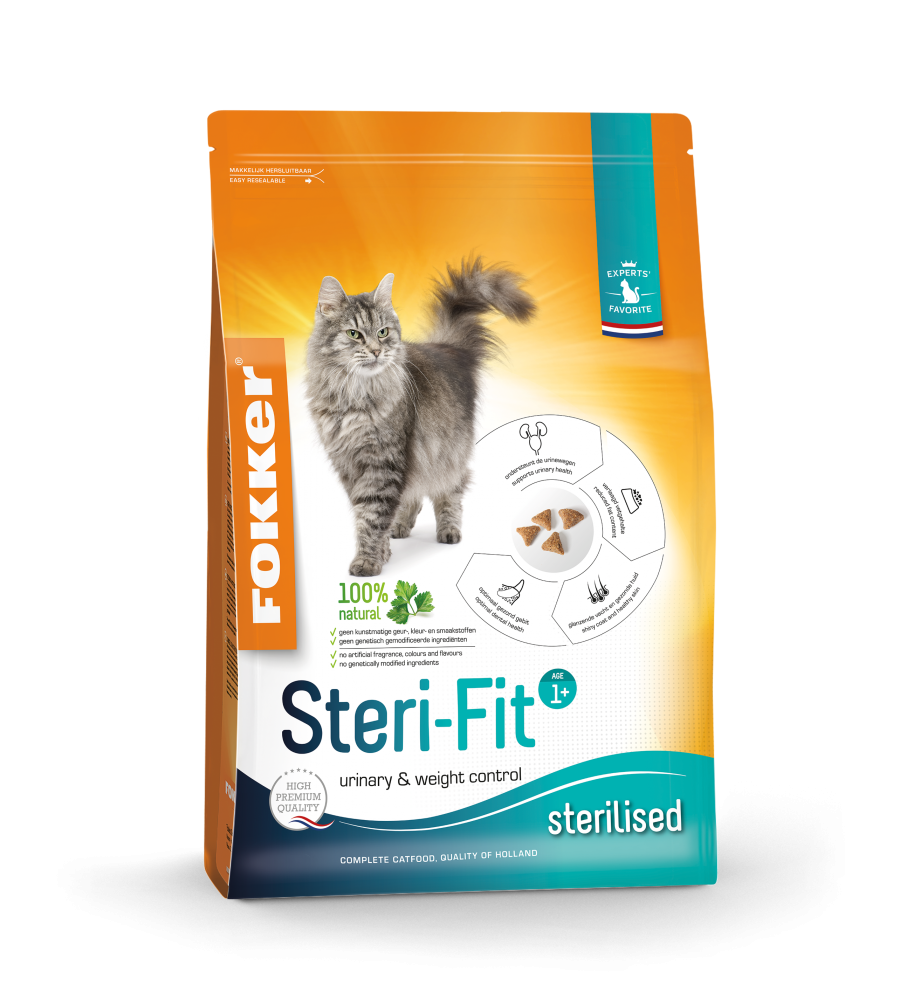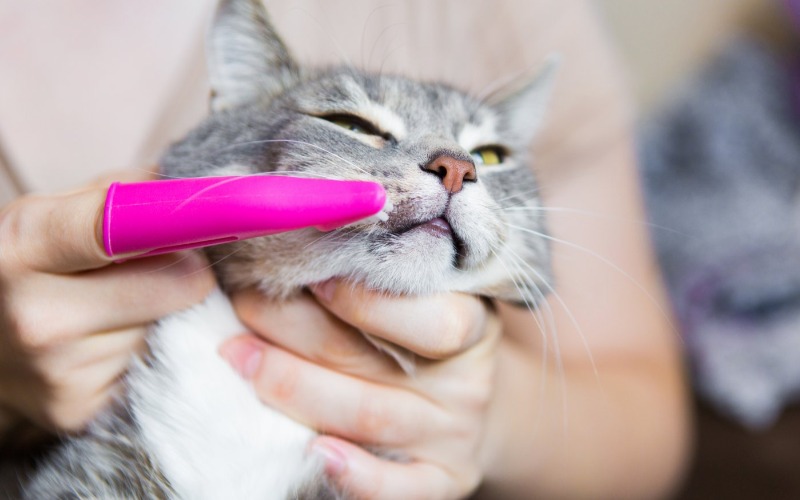Staring at you with big eyes, sweet purring when you walk by or roll over on the ground at the food bowl. Your cat knows exactly how to persuade you to feed her. And before you know it you give in to her begging. If you look at it this way, it is no wonder that at least 30% of cats are overweight.
Read tips to keep your cat at a healthy weight.
The optimal weight differs per cat.
A general rule is that the ribs should not be visible, but should be easily felt. Keep in mind that for a cat where 4 pounds is the ideal weight, an extra 2 pounds means he is 50% too fat. If you compare that with a human of 80 kilos, that is equivalent to 40 kilos overweight. Those 2 kilos are certainly not as innocent as they seem.
The most common dangers of obesity in cats are diabetes, problems with the heart, lungs, joints and fatty liver. Furthermore, tomcats who are too fat are more likely to suffer from bladder stones and cats more often have a bladder infection. Being overweight can even shorten life expectancy by 3 to 5 years. Reason enough not to let the pointer of the cat scales tip over.
Being overweight can have various causes.
For example, after castration or sterilization, the energy requirement of your mini-tiger decreases by 20 to 30 percent, while the appetite increases. Furthermore, the older your cat is, the less it moves. Illness can also play a role in the development of obesity. Always visit your vet first if you see that your cat is getting too fat.
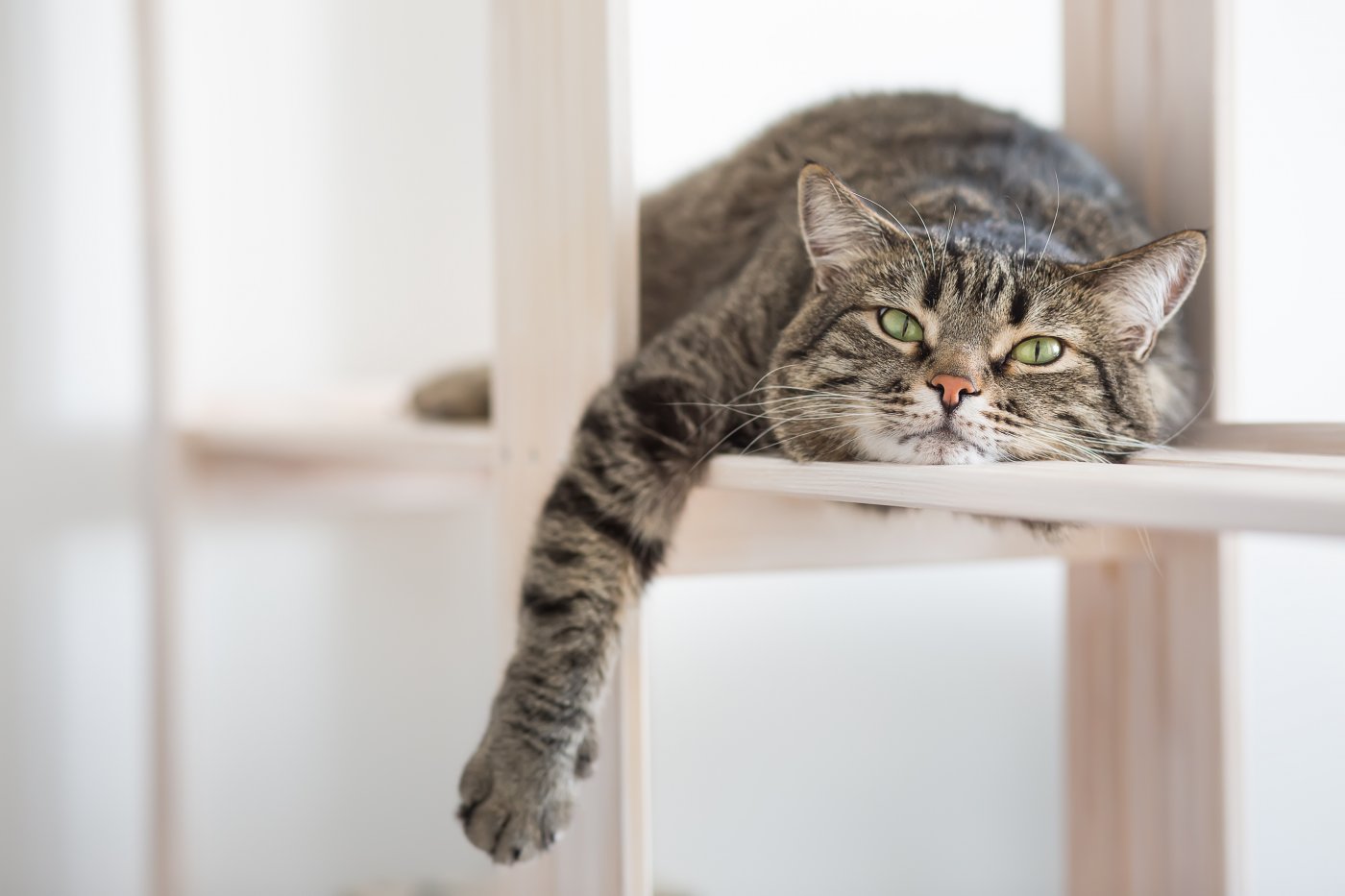
Eat less and move more.
That is the key to a healthy weight. But that's easier said than done. Rule 1 for cats is that they should never be on a crash diet. It is best to let your cat lose 1% of its weight per week. Your vet can calculate the best way to handle this. Of course we have tips to make losing weight easier.
- 1. Playing
Is the only exercise your cat gets walking the route between food bowl and sleeping place? Then challenge him to play. A feather rod, a light or a toy mouse with catnip stimulate the hunting instinct. Hiding kibble in different places in the house also encourages movement. Secretly put the chunks down, and the cat's nose will look for them. - 2. Feeding meals
Unlimited feeding works for some cats, but is not an option if your cat is overweight. So let your fluffy four-legged friend get used to meals. Divide the food over at least 3, but preferably more, small eating moments per day. This way you know exactly how much your cat is eating. - 3. Going out
Indoor cats are more likely to be overweight than their outdoor companions. After all, outdoors are birds to watch, insects to catch and leaves flying around to run after. In other words, more movement. If you find it dangerous to let your cat outside freely, you can fence off your garden or balcony with a net to prevent it from escaping. Also make sure you have a high scratching post or planks on the wall indoors for jumping. The more challenge, the better.
Good food is the basis of a healthy weight for your cat.
Therefore, if your cat needs to lose weight, always look at the type of food you give him. Fokker, for example, has special food for sterilized and neutered cats.
It contains less fat, but contains all the important nutrients. This makes it a lot easier to keep your cat on weight.
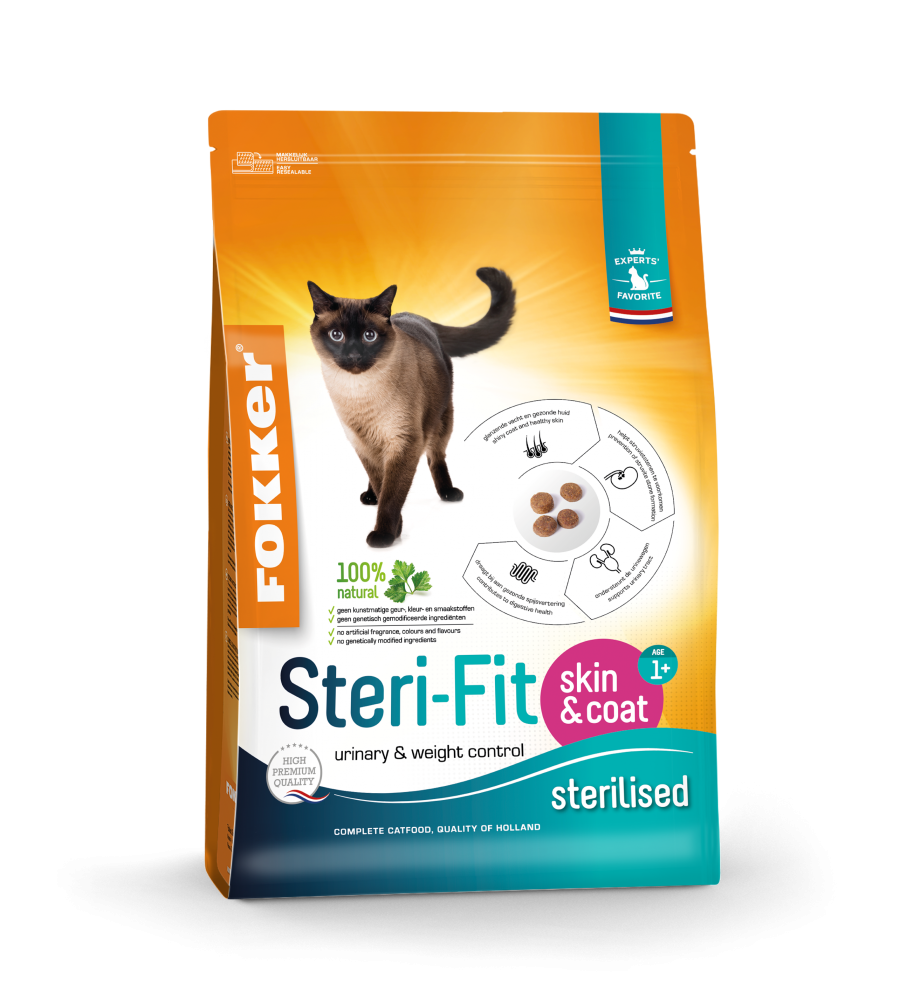
Food for adult cats that have been sterilized and need an extra boost for skin and coat.
See product
 Language
Language  Login
Login